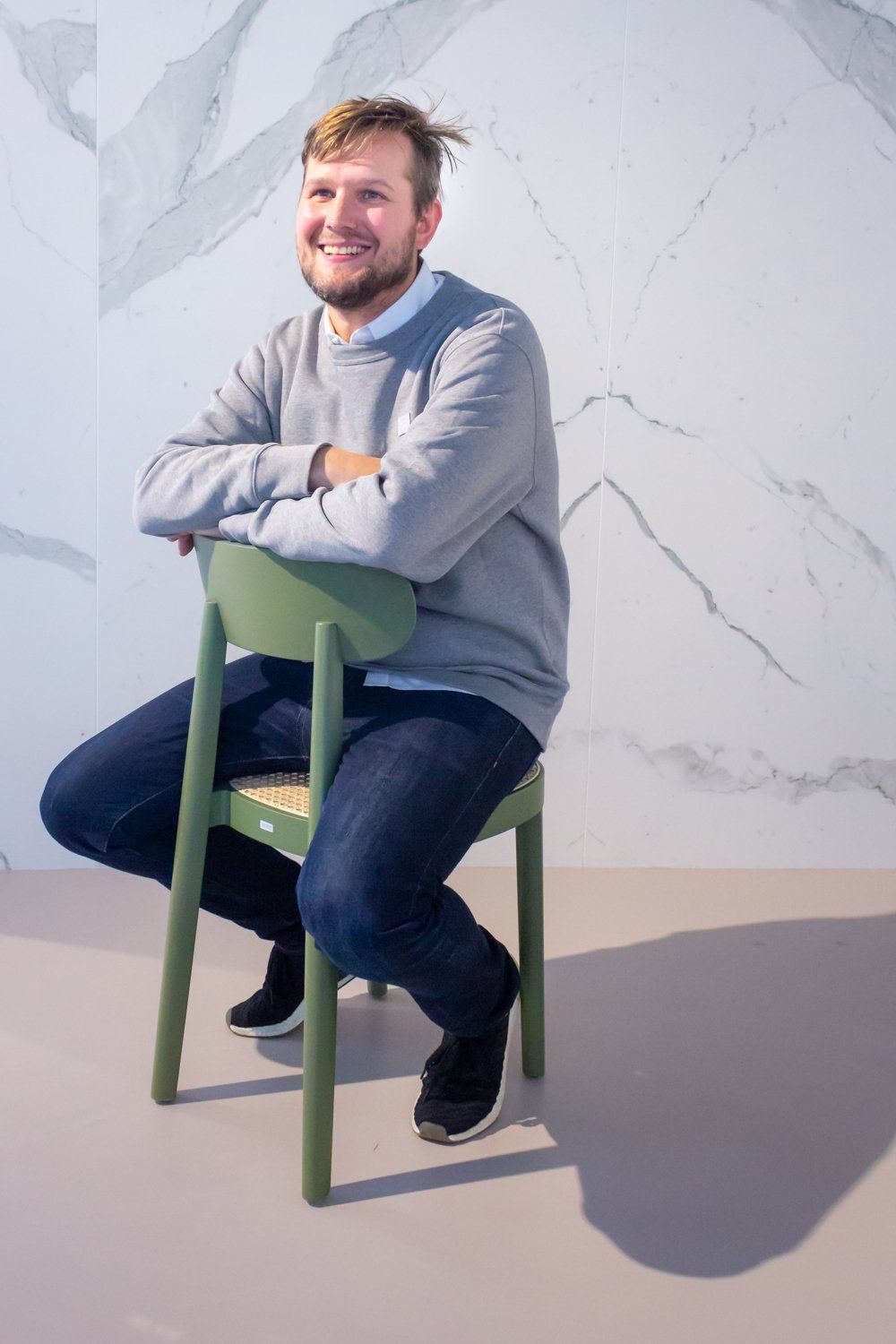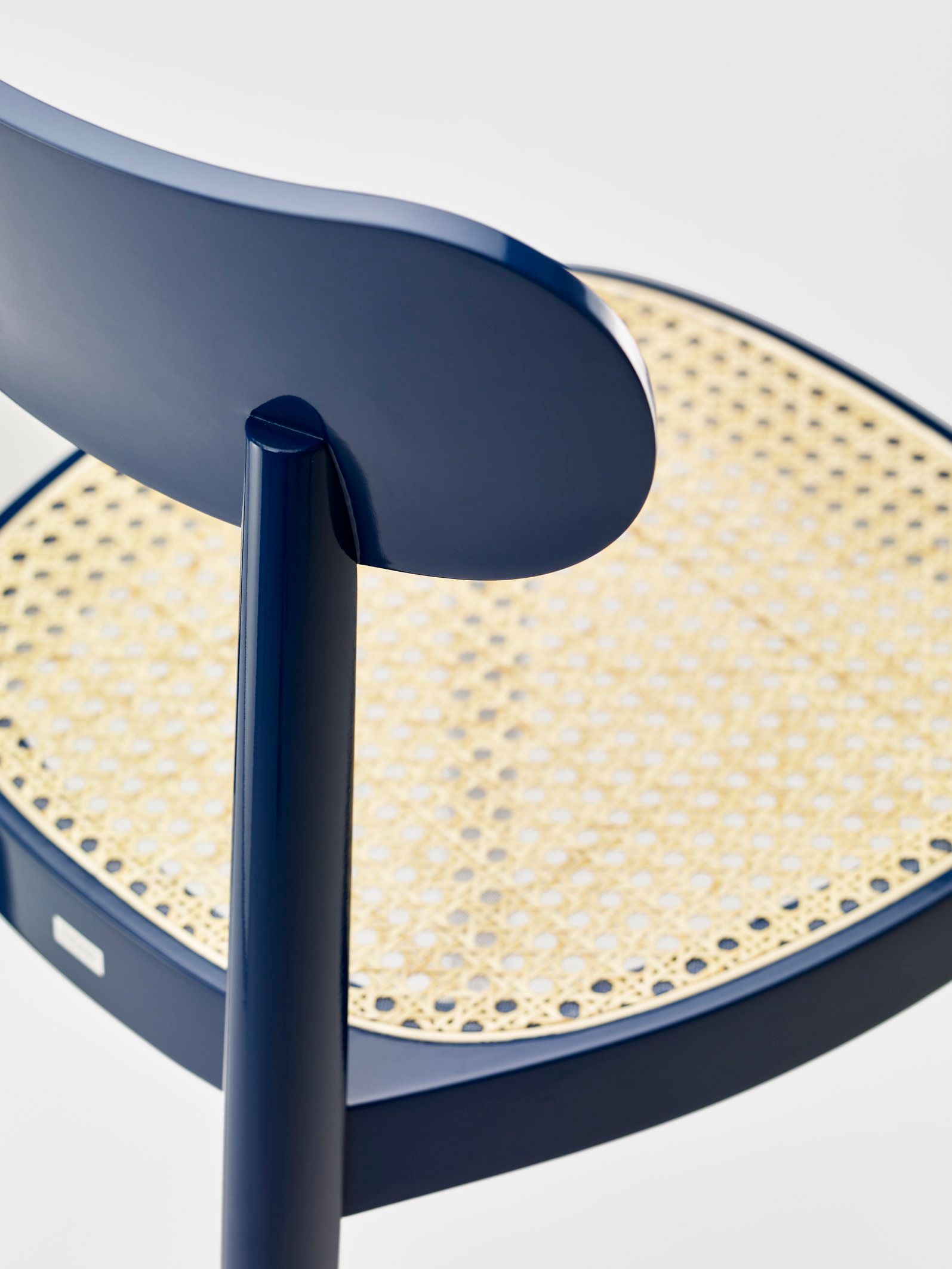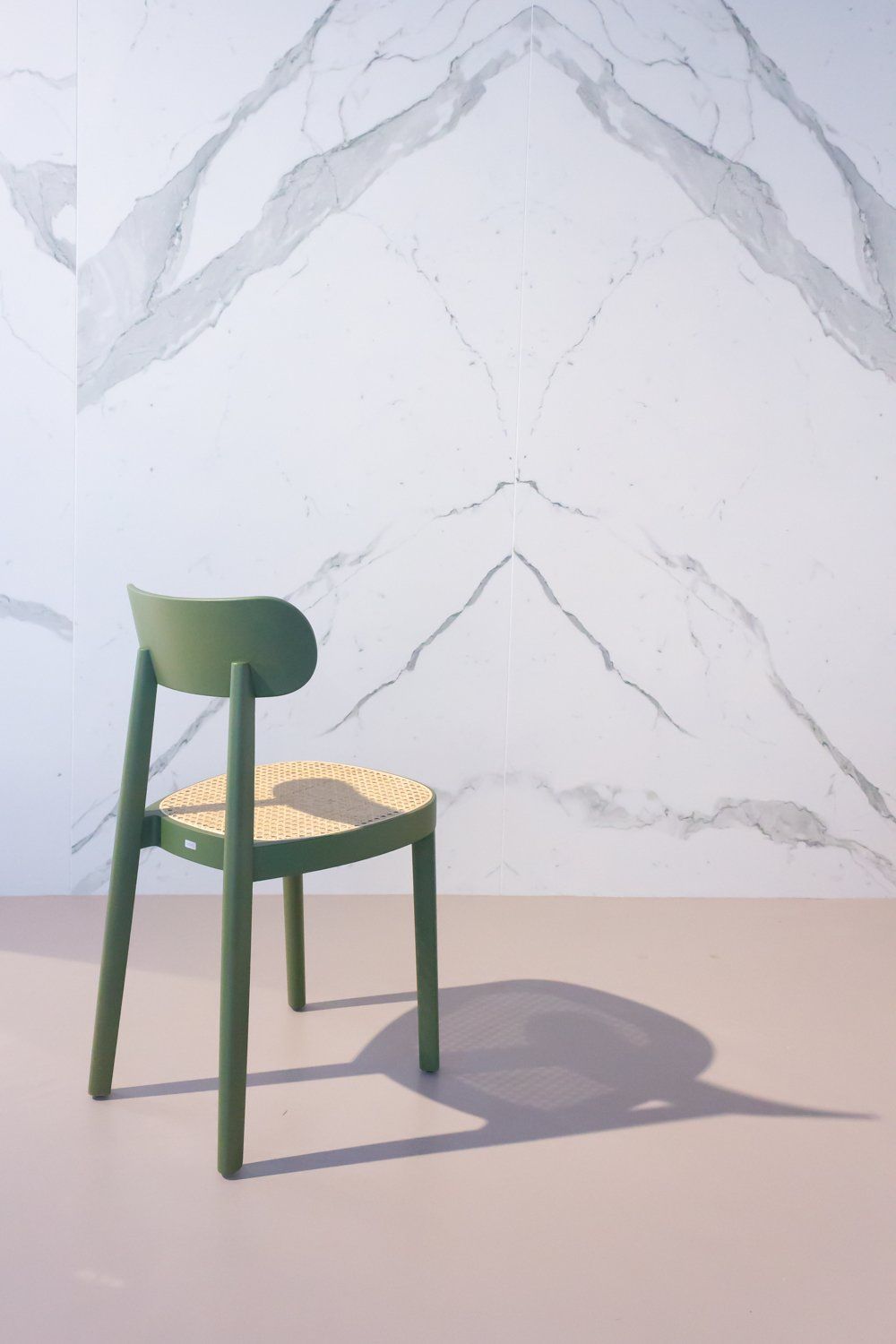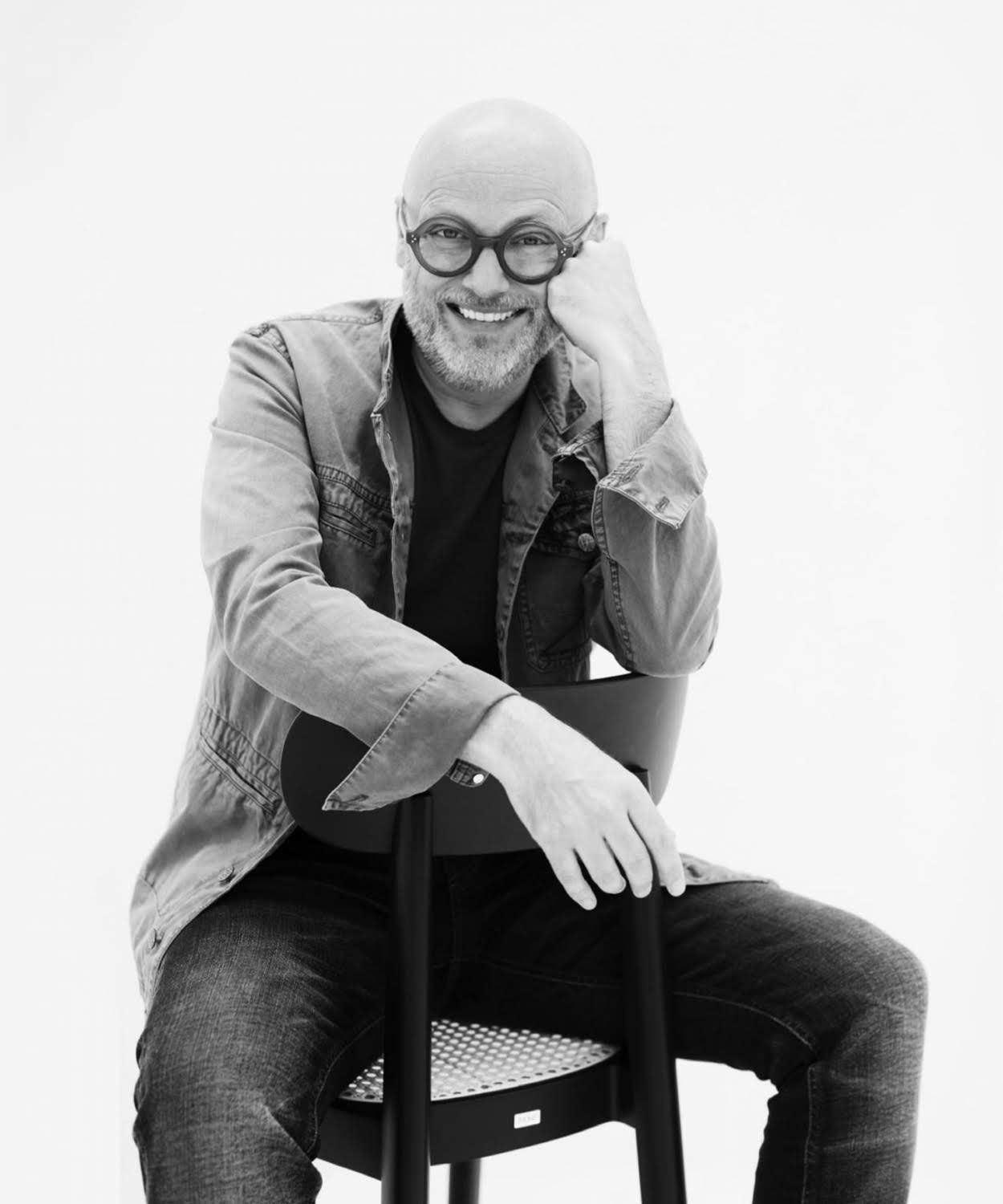Sebastian Herkner: “It’s high time we moved on to something more sophisticated.”
Slow down. And have a look at the chair that’s nearest to you. Take in its curves, its colors and the materials – they’re all there because the designer made a deliberate choice to use them. I don’t know about you, but it definitely sounds like a daunting task to design…

Slow down. And have a look at the chair that’s nearest to you. Take in its curves, its colors and the materials – they’re all there because the designer made a deliberate choice to use them. I don’t know about you, but it definitely sounds like a daunting task to design a really good chair, let alone a new classic such as the Thonet 118. I sat down with its designer Sebastian Herkner a while ago and found out what makes him tick.
If you are in the Netherlands, then you can check out the latest issue of Libelle Living. Together with three other Dutch interior stylists, I was photographed on the Thonet 118. You can see the photo they took of me at the bottom of this interview.

First off, let me tell you that I am pleasantly surprised by how comfortable the Thonet 118 is!
Why, thank you! I designed it to be a versatile chair that you can sit on for at least a few hours. Of course, designing for a renowned brand like Thonet is a big honor and so I wanted to get every detail just right. The briefing they gave me was all about the Frankfurt chair, which is the quintessential restaurant chair you see everywhere you go in Germany. Thonet asked me to come up with a design that is equally simple, functional and affordable. As for the price, I’m proud to say that the finished product you’re sitting on right now starts at €285 (VAT excluded) and features all the elements that Thonet is famous for. First, there’s the steam-bent wood that plays a big role in many Thonet chairs. For the 118, I insisted that the seating frame was bent in one piece so that there wouldn’t be any seams. In order to keep production costs down, construction had to be as simple as possible – just like the Frankfurt chair. And finally, of course, the Thonet wicker is a nice option on the 118.

I also understand that the shape of the legs rhymes with the shape of the seating frame. You really have to think of every tiny detail when you design a chair, do you?
You do! The Frankfurt chair has rectangular legs, but my team and I wanted do something a bit more subtle. Like the silhouette of a well-designed car, the Thonet 118 plays with shadows and light. It adds so much more elegance. I’m very happy that design in general is becoming more elegant. We’ve had too much Scandinavian style design these past years. It’s high time we moved on to something more sophisticated. That also explains why we did a glossy dark blue version. I wanted at least one version of the 118 resemble one of those lacquered Chinese boxes. It’s a little outside the comfort zone for a brand like Thonet, but I’m sure it’s going to sell really well. I love to work with colors. In fact, color is often the start of my design process. I guess I must have learned that when I worked as an apprentice for Stella McCartney.
Wait – what? You used to work for a fashion designer?
I know, right? I have to say it was all a bit of a coincidence. At school, I had dabbled in fashion a bit and thought it would be nice to explore it a bit further and live in London for a while. It was tough working for Stella, but it did teach to persevere and get the job done. Afterwards, I realized I didn’t want to pursue a career in fashion. I much preferred living in Offenbach and starting my own design studio there, far away from the big city.
Why did you become a designer?
I suppose my father played a big role. He used to do everything around the house, installing shelves, repairing stuff. My father taught me at a young age how to use a saw and hammer. For me, it was the most normal thing in the world to make my own furniture. I knew I wanted to create, but it wasn’t until later that I came across the term industrial design. It was – and still is – a term you rarely hear about in the news. Fashion, architecture and photography always steal its spotlight. At school, I used to love art. After my final exams, my art teacher wrote a sentence on the blackboard which I’ll never forget. Now it’s time to fly.
You definitely took that piece of advice to heart!
My success didn’t come falling from the sky, though. I started my own design studio two years before I graduated, which is quite early. I also worked as a teaching assistant. All the money I earned went into developing prototypes. After a while, I also had enough money to afford a stand at the SaloneSatellite in Milan. The first time I went there in 2009, I presented a wooden chair, a lamp and a glass table. Feedback was good, but then again there were hundreds of other young designers who were also showing their work. Nendo or Front were there as well, by the way. I had to go back to Milan twice before I finally had some success.

How come it was Nendo and you who had a breakthrough and not one of the other young designers?
You need patience and perseverance. I don’t know how many brands I asked if they were interested in producing the Bell Table I had designed. Without success, because all of them thought brass was terribly old-fashioned. I guess I was ahead of my time, you see brass everywhere nowadays. You can’t imagine how many times I got rejected in the beginning. Classicon was the company that finally put in production this table 3 years later.
What does a typical day look like for you?
Actually, I spend a lot of time traveling. I just got back from Colombia, where I designed the Caribe Collection for Ames Sala. Colombia is not exactly a country that is known for its cutting-edge design, but they do have some great craftsmen. They taught me quite a few new techniques that I might use for other brands as well. The big advantage of working for so many different brands is that you an cross-pollinate. When I’m at my studio, I spend a lot of time with my team. I take good care of everybody. When we develop a new product, the initial sketches always come from me. Together with my team, we exchange ideas and develop small 3D-models. Sometimes it only takes me one day to think of a new design. But other times, it can also take over a year. When that happens, it’s up to me to call the client and tell them I don’t have the ultimate idea just yet. I know my clients can be under a lot of pressure to release new designs at Salone del Mobile each year– but then again, I also want to stay authentic.
Would your work look different if it didn’t have to be commercially viable?
Yes, although I can’t tell you what it would look like. It doesn’t matter, I guess. As a designer, you have to make money with the products you come up with. Designers for outside brands often work just with royalties. That means that if one of my chairs doesn’t sell, my team and I have worked for nothing. That’s a big risk. I think design should be for everyone. I’m not interested in design posing and art.
Talking about which, I’m sure there are some artists you admire.
Definitely! Olafur Eliasson recently had a beautiful exhibition at the Pinakothek in Munich with aquarelles he made using melting blocks of ice. Alicja Kwade is another artist I admire. I also collect art, although I never get around to actually hanging it. It’s all piling up at home right now.
What does your place look like besides the big pile of art?
My husband and I recently bought a penthouse in a new residential building in Offenbach near Frankfurt. It’s the most multicultural city in Germany. I really enjoy eating at restaurants from all over the world. My favorite place is our rooftop terrace, though. It has lots of plants and even a tree – the perfect place to end a busy day with a glass of wine.
And what’s next on the horizon for you?
At the moment, we’re working on a pair of sunglasses. That’s definitely a bit of a departure for me, since sunglasses are made for the human body and are very personal. I’m so grateful that I can do so many different things!

